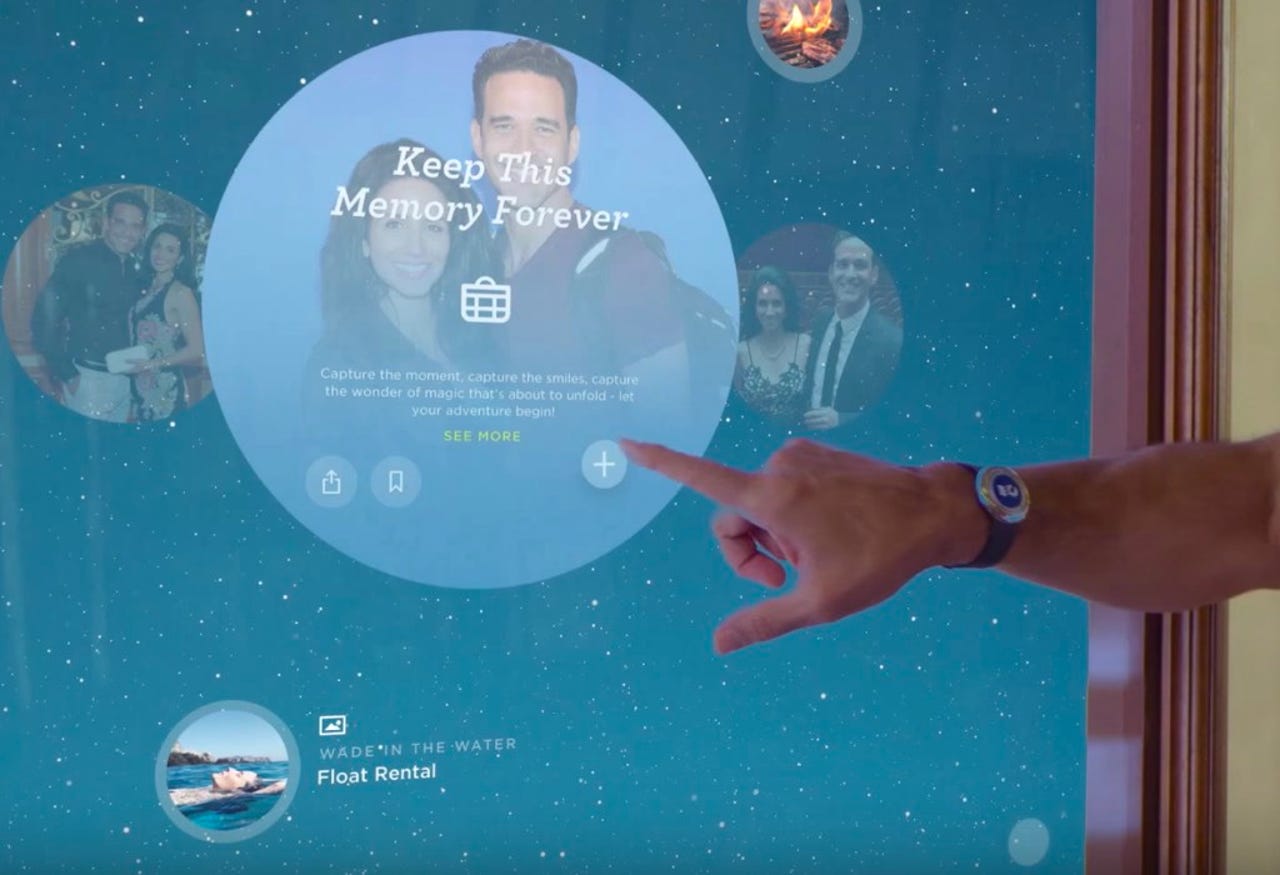Carnival Ocean Medallion: 5 takeaways from one of 2017's premier IoT projects


The cruise industry is following the high-tech wave with the introduction of a new machine-learning wearable device for passengers that Carnival CEO Arnold Donald announced at CES 2017. A lot has been written about the move and it's shaping up to be one of the most significant Internet of Things projects of 2017.
We've covered it extensively on ZDNet and TechRepublic and here we've broken down the most important things you need to know about the project.
Background
Carnival, with headquarters in both Miami, Florida, and London, England, is calling the 1.8 ounce device the Ocean Medallion. It is a quarter-sized metal disc that can be carried in a passenger's pocket, pinned to clothing, or worn on the wrist or neck. It will be loaded with the user's personal identifying information and act as a payment method, logging all of their purchases and preferences.
It will also note what they opt to do while on board, and what they opt against, as well as which invitations they accept, and which they ignore in order to personalize future invitations and offers. The medallion will allow for keyless entry into a passenger's cruise cabin, and serve as a personal tracking device with wayfinding so that passengers can locate friends and family members around the massive cruise ship.
The medallion will debut on the Regal Princess in November 2017, and in 2018 it will be added to the Royal Princess and Caribbean Princess as part of a new Medallion category of cruise ships on Princess Cruises. "Eventually we expect Medallion to be launched across the entire fleet," Donald said. It's a major move for Carnival, with 2015 revenues of $15.7 billion, to introduce this technology, because it is the largest cruise company in the world, with a fleet of 101 ships visiting 740 ports. There are 10 cruise lines under the Carnival umbrella: Carnival Cruise Line, Princess Cruises, Holland America Line, Seabourn, Cunard, AIDA Cruises, Costa Cruises, P&O Cruises (UK), P&O Cruises (Australia), and Fathom. Carnival has an additional 15 ships scheduled to be delivered to its various brands between now and 2020.
"The Ocean Global Platform delivers a lifestyle engagement and this is a real game changer," Donald said. "We recognized each guest is different and the things that make them happy are different."
With more than 11 million cruise passengers on board annually on Carnival ships, this is potentially one of the most sophisticated IoT deployments in the world to date. Here are five takeaways on how Carnival worked with its team and its partners to make it happen.
SEE: Internet of Things: The Security Challenge (ZDNet/TechRepublic special report)
1. A proprietary digital portal on board each ship
As part of the overall Ocean Global Platform, the Ocean Medallion will pair with the Ocean Compass, the name for Carnival's proprietary digital portal that can be used online, on smart devices, on kiosks in home ports, on stateroom TVs and interactive surfaces throughout the ship and on devices carried by ship employees. The medallion doesn't require charging and doesn't have an on-off switch or a menu to navigate.
Passengers will receive the device at home, before they leave on vacation. Each medallion will be laser etched with the user's name , ship and date of sailing and will come pre-loaded with personally identifying information. It will be provided to all passengers at no cost.
There will inevitably be some passengers who do not want to use the medallion, and they will be able to opt out. But, Beau Williamson, managing director at Accenture Travel, who consulted with Carnival as a partner in the project, said that eventually most passengers will likely be willing to use the medallion as people become more comfortable with wearable technology.
SEE: Video: Accenture helps Carnival make cruises more interactive (TechRepublic)
2. Operating through a network of sensors
The medallion and the Ocean Compass work with a network of 4,030 interactive sensors throughout the ship that Carnival is calling the xIOS, or the Experience Innovation Operating System.
Scott Sahadi, CEO of TE2, a platform-as-a-service company, orchestrated the software for the Medallion system.
"In transformative initiatives like this there is always a challenge. Mostly around getting everybody to work together. Carnival has such an amazing vision but it takes a village to actually transform a company the size of Carnival and to move the needle the way we're moving it within an industry," Sahadi said.
"There isn't a day that goes by that another digital innovation isn't hyped about in the tech space. The reality is most of these are experiments. Carnival has built a platform that will scale to 100 ships to over 147 destinations in real time. That's not typical. That takes some serious kung fu," Sahadi said.
SEE: Video: How the platform behind Carnival Medallion pulls off the IoT magic (TechRepublic)
3. Data analytics and machine learning
The medallion will learn what guests like, and offer choices over time based on what they've opted to buy, or rejected, in the past.
"Personalization begins at home. It's based on a guest genome that evolves multiple times per second. The guest genome evolves in real time, creating experience intelligence. It empowers us to maximize each and every guest's interaction," said John Padgett, chief experience and innovation officer for Carnival Corp.
The medallion incorporates machine learning. "You hear about machine learning and big data and big data analytics, and we are really taking the next step in that space. I like to say big data only helps the next guy. On vacation we want to make sure a guest's vacation is maximized on that vacation, not some future vacation," Padgett said.
"We are literally running hundreds of algorithms on the edge of what we call experiential computing devices in our overall sensor network aligned to our experiential Internet of Things that is plowing back intelligence and machine learning in real time to optimize and maximize that guest experience instantaneously with the experience itself. It's completely next level in that space," Padgett said.
SEE: Video: Carnival's John Padgett tells how Ocean Medallion IoT will transform guest experience (TechRepublic)
4. Overcoming timing and technology challenges
Determining what the device would look like was the first challenge to overcome, said Michael Jungen, senior vice president of guest experience design and technology for Carnival.
"[We] wanted to ensure from the very beginning that the aesthetics of our Medallion had the character of medallions of old, meaning that it was made of metal. So the outer ring is made of metal and that was a particular design challenge that the team had to take on to insure that we could give superlative performance from our Bluetooth low energy device into our shipboard systems. We had to work long and hard to come up with a great antenna design and a manufacturing design that would allow us to achieve the performance that we needed in order to deliver great experiences," Jungen said.
Another challenge was the timing, according to Richard Lerz, CEO of Nytec, which built and installed the hardware for Carnival.
"Carnival had a really tight deadline because ships are only in dry dock every three years for 10 days. So during the development process we already had our marching orders that we had to work around knowing when we had to deliver the next phase of the product," Lerz said.
A third challenge was testing the technology and making sure it could survive the extreme marine conditions on a cruise ship.
"This technology is brand new so we didn't have a lot of time to go through multiple different iterations that you normally would bringing a product to market. So again, tight deadlines, lots and lots of testing, lots of innovating, lots of teamwork," Lerz said.
SEE: Video: How Nytec helped Carnival overcome the challenges of its massive IoT deployment(TechRepublic)
5. Multiple communication technologies at work
Inside each medallion are multiple communication technologies including Near Field Communication (NFC) and Bluetooth Low Energy (BLE).
"We've turned the industry equation upside down. Normally BLE are stationary and NFC are mobile, but this little baby is our beacon and it is mobile and our readers are stationary," Jungen said.
The medallion can also be used for payment throughout the ship.
"In our new system, you consume it, we'll take care of the transaction. That's enabled by our Bluetooth Low Energy highly secured communications protocol that then goes back to our Medallion pay engine deep in the core of the experience ecosystem and communicates for payment settlement across various methodologies to insure that every guest no matter what their available thresholds are on their Visa or Mastercard can put in as many payment methods types as they'd like, configure their limits and ensure then that as they enjoy the experiences aboard the ship within our destination and with our excursion providers that we'll take care of settling that for them based on their wishes and preferences," Jungen said.
SEE: Video: How Carnival used IoT to streamline customer experience and drive digital transformation (TechRepublic)